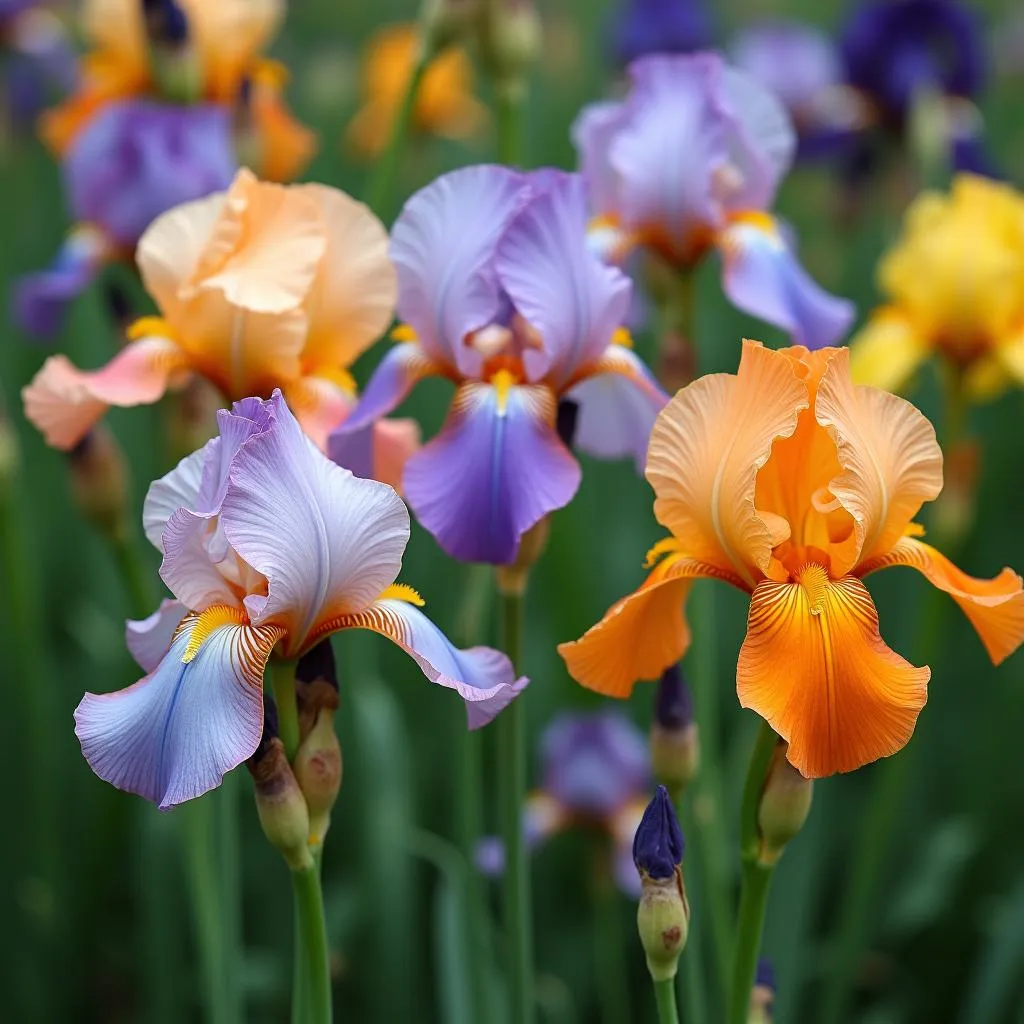You’ve been tending your irises with care, only to be greeted by a surprising sight: a different color blooming than you expected. Don’t worry, this isn’t always a cause for alarm! Irises, known for their vibrant hues and elegant blooms, can sometimes exhibit color changes due to a variety of factors.
Let’s delve into the fascinating reasons why your iris flower might have changed color.
Environmental Influences on Iris Color
Environmental factors play a significant role in the color of your iris blooms. Here are some key elements to consider:
- Soil pH: The acidity or alkalinity of your soil, measured by its pH level, can affect pigment absorption. A slightly acidic soil (pH 6.0-6.5) is generally ideal for irises.
- Sunlight Exposure: Irises thrive in full sun but can tolerate some shade. Insufficient sunlight can lead to less vibrant or even faded colors.
- Temperature Fluctuations: Extreme temperatures, both hot and cold, can stress the plant and impact pigment production, leading to variations in color.
- Water Stress: Both under-watering and over-watering can stress your irises, affecting their overall health and potentially impacting their color.
 Iris Color Variation in Garden
Iris Color Variation in Garden
Genetic Factors and Iris Color Change
Beyond the environment, genetics also plays a crucial role in iris color.
- Transposons: These “jumping genes” can move around within the plant’s DNA, sometimes disrupting color pigment genes and leading to variations in flower color.
- Pollination: Cross-pollination between different iris varieties can result in offspring with unique color combinations, often a blend of the parent plants.
- Age of the Plant: In some cases, irises may exhibit subtle color shifts as they mature. This is typically a natural aging process and not a cause for concern.
Other Potential Reasons for Color Change
- Viral or Fungal Diseases: While less common, certain diseases can affect the overall health of your iris, potentially impacting pigment production and leading to color changes.
- Nutrient Deficiencies: A lack of essential nutrients in the soil can also affect the plant’s ability to produce pigments, resulting in less vibrant or altered colors.
 Healthy Iris with Vibrant Color
Healthy Iris with Vibrant Color
What to Do If Your Iris Flower Changes Color
- Assess the Environment: Check the soil pH, sunlight exposure, watering practices, and recent temperature fluctuations to rule out environmental stressors.
- Inspect for Pests and Diseases: Examine your irises for signs of pests, diseases, or nutrient deficiencies.
- Consider Genetics: If you’ve recently planted new irises, the color change could be due to cross-pollination or simply the plant’s natural genetics.
- Document the Changes: Keep track of the color variations you observe, including when they occur and any other accompanying symptoms.
Conclusion
While a change in your iris flower’s color might seem alarming, it’s often a natural response to environmental factors or genetic variations. By understanding the potential causes, you can better address any underlying issues and continue to enjoy the beauty and intrigue of these captivating flowers.
Need help diagnosing why did your iris flower change color? Contact us at Phone Number: 0373298888, Email: [email protected], or visit our address: 86 Cầu Giấy, Hà Nội. We have a 24/7 customer support team to assist you.

